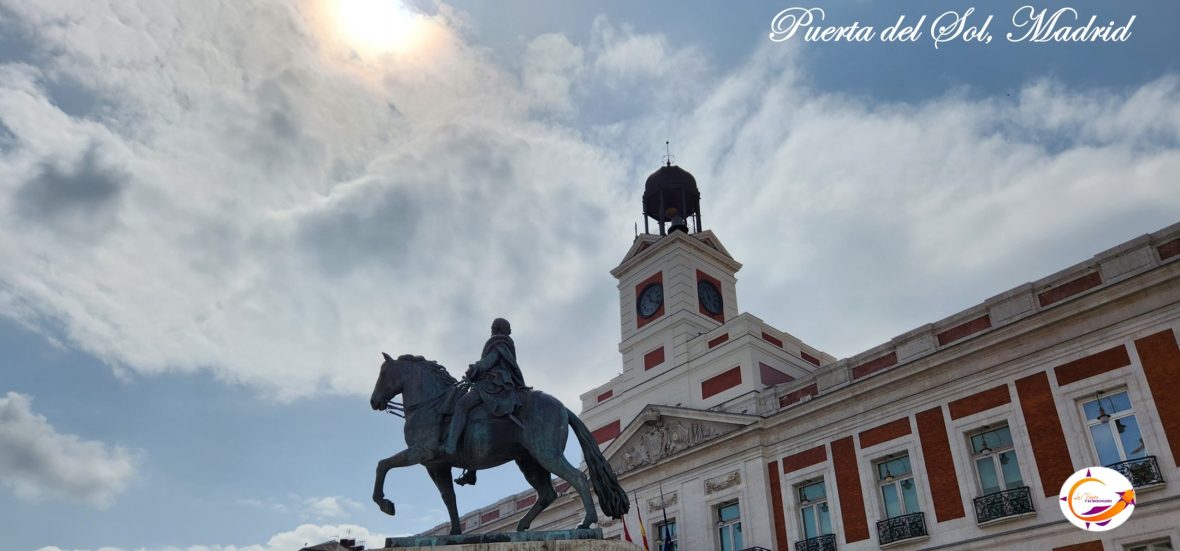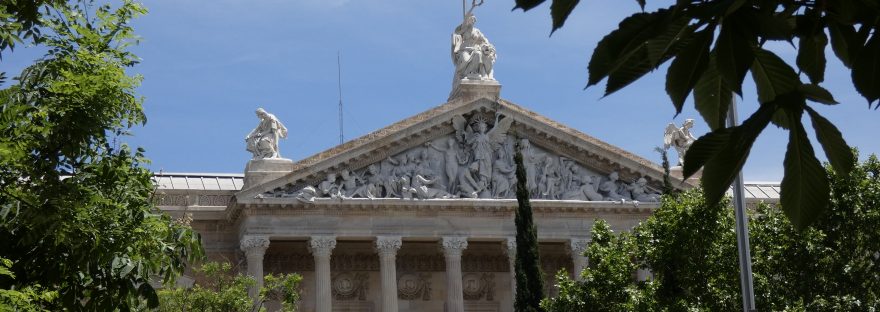Strolling on the Paseo de Recoletos Avenue in Madrid, one will find what are today the headquarters of the National Library of Spain. Originally founded by King Philip V in 1712 as the Royal Library. It is currently located in the Palace of the Library and National Museums, a building shared with the National Archaeological Museum.
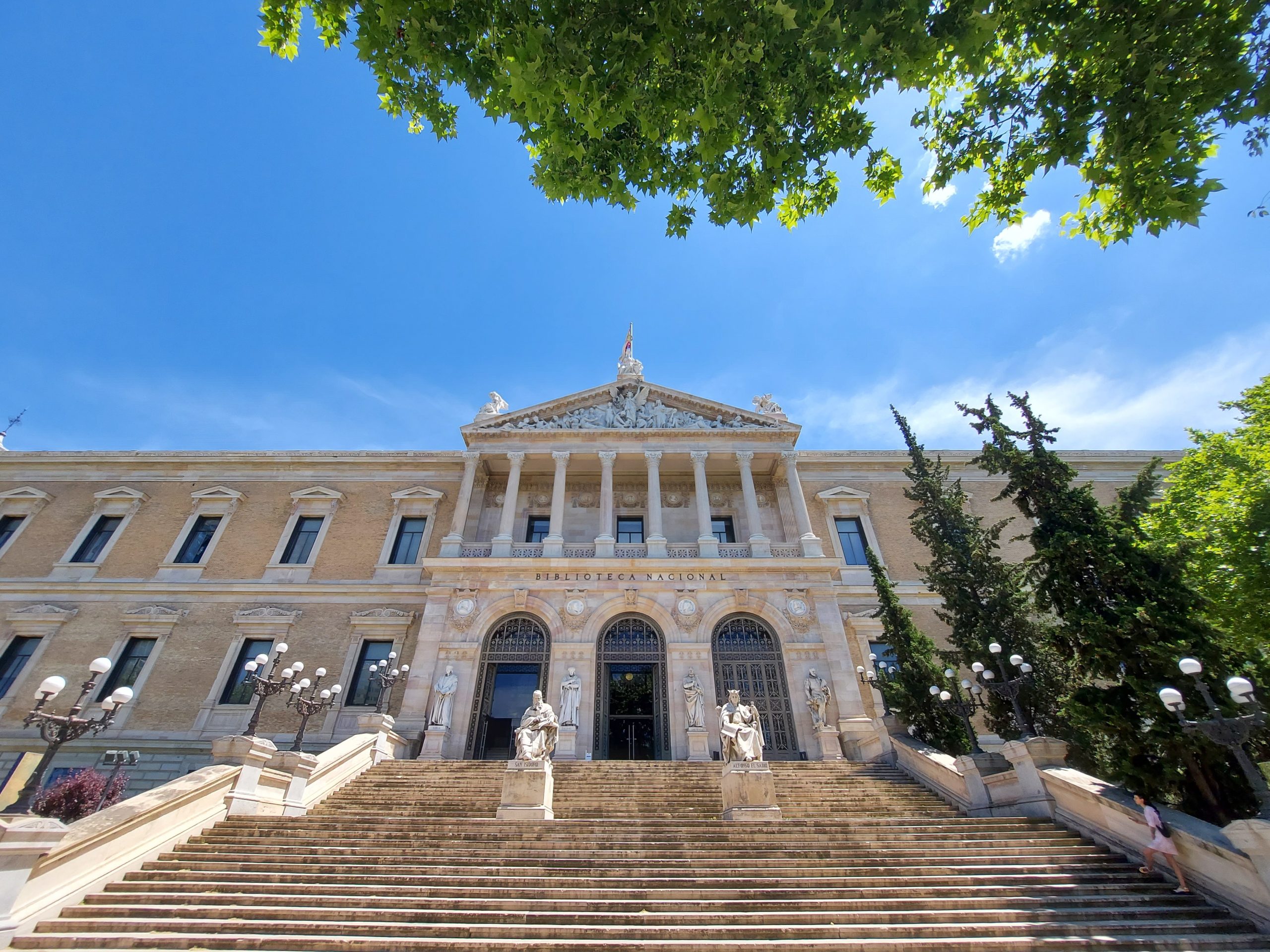
On April 21, 1866, Queen Isabella II laid the first stone for the Palace of Archives, Libraries and Museums. However, due to economic factors, the construction work proceeded slowly, as well as modifying the original project. Its construction was completed in 1892, when it was opened to the public on the occasion of the acts of the IV Centenary of the Discovery of America and in 1896 it was opened permanently. Its style is neoclassical, with a rectangular floor plan and four large interior courtyards.
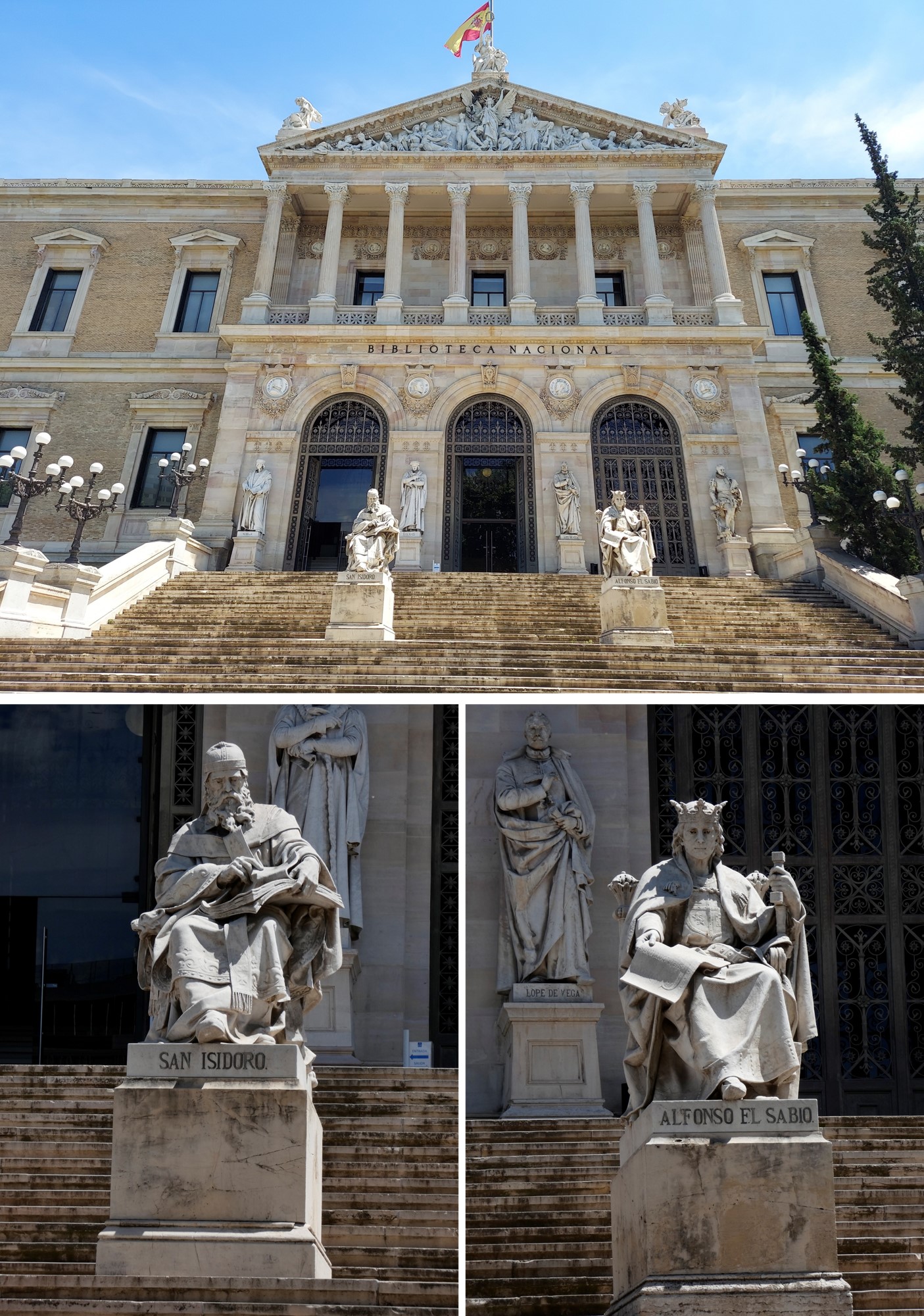
From afar one can observe the monumentality and classical beauty of the Palace of the Library and National Museums. Its façade exhibits the grandeur of the heritage it contains by presenting a portal with Doric columns at the entrance and an Ionic colonnade of the balcony on the upper floor.
In addition, the grand staircase leading to the main entrance welcomes us with sculptural works of Saint Isidore, Alfonso The Wise and Lope de Vega among other great figures of history.
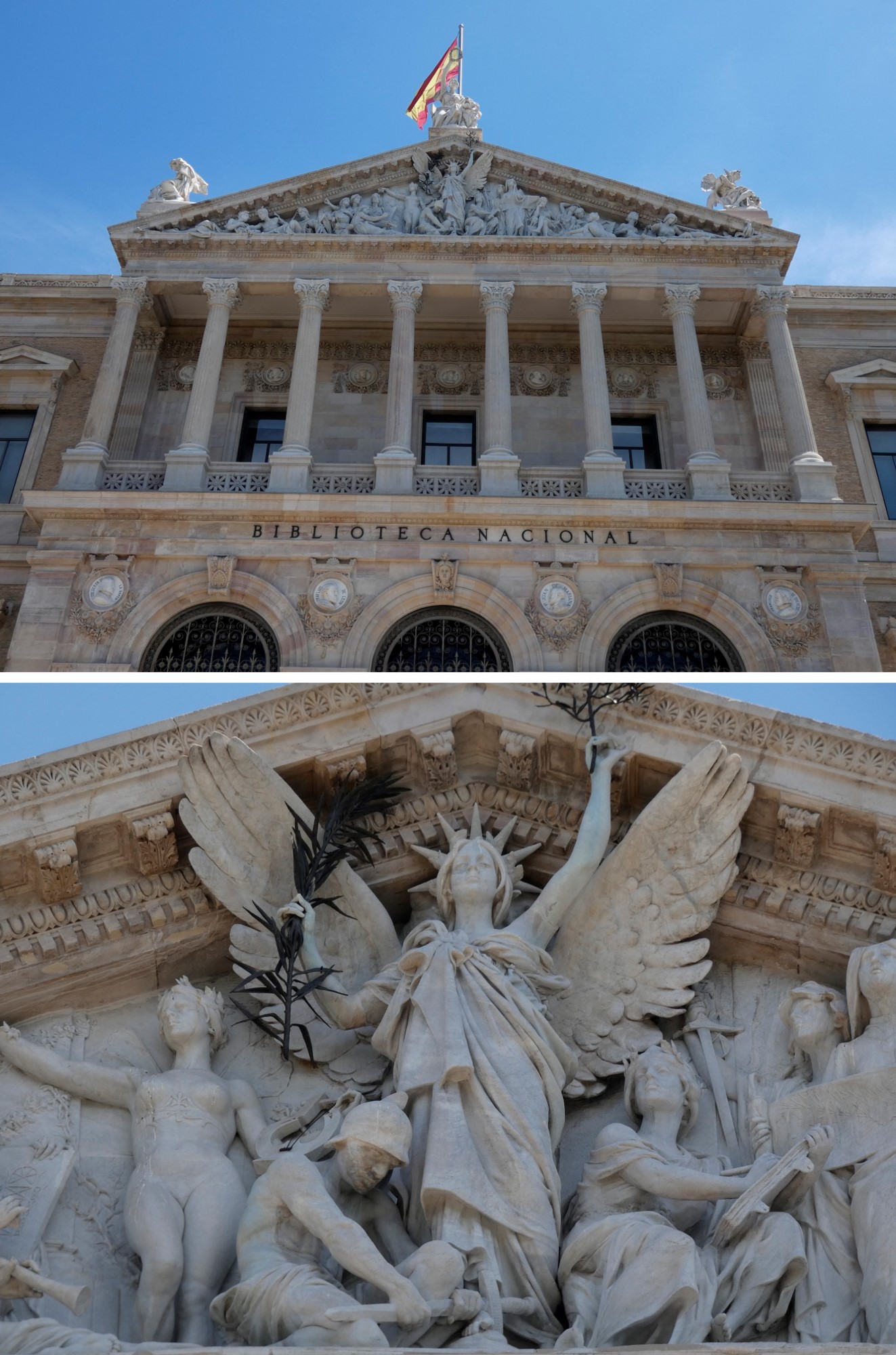
The pediment of its 1903 facade exhibits a set of nineteen sculptures in Carrara marble by the sculptor Agustín Querol. The central figure represents the allegory of poetry.
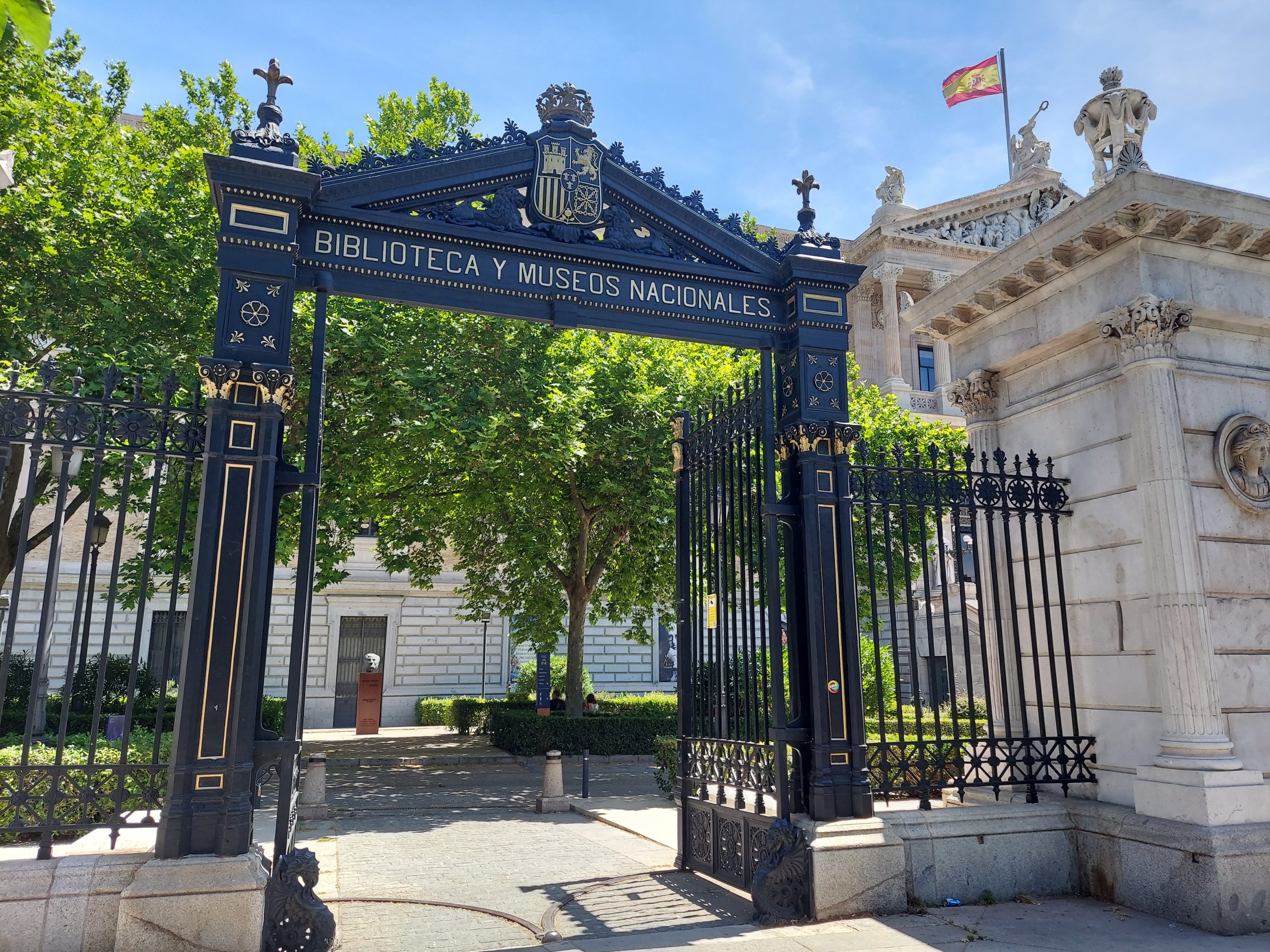
The National Library of Spain is an autonomous organization with the custody of Spain’s bibliographic and documentary heritage. Its purpose is to collect, catalog and conserve bibliographic collections, guarding around thirty million publications produced in Spain since the beginning of the 18th century. It also conserves a copy of all the books published in Spain.
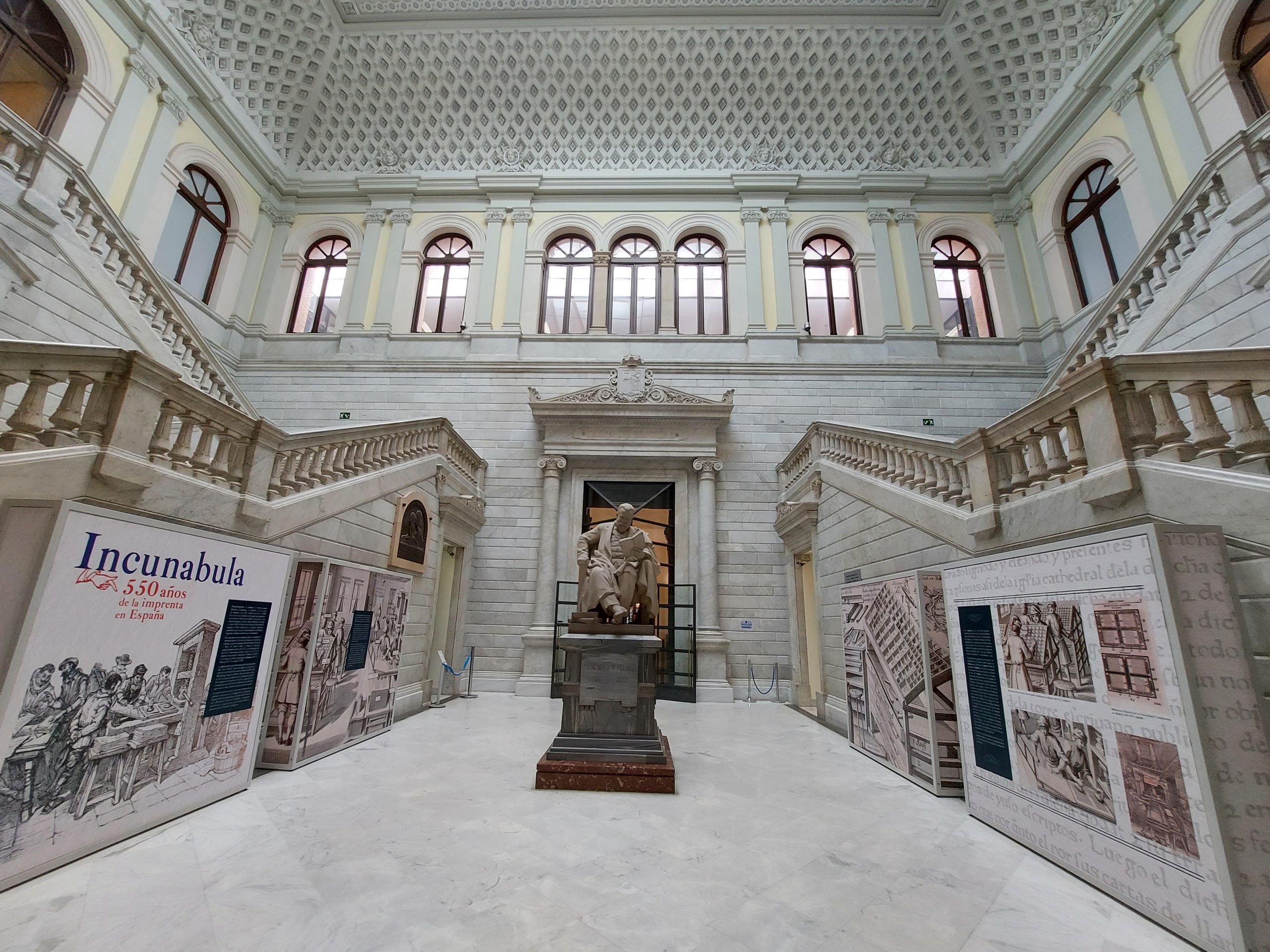
The base of the Spanish bibliographic heritage found here includes all types of works. From manuscripts, personal archives, incunabula (editions of printed books produced before 1501) and ancient and modern prints, as well as magazines and newspapers. The Cervantes collection is exceptional, highlighting the 26 editions of Don Quixote printed in the 17th century. This cultural collection is complemented by an important collection of music, sound recordings and audiovisuals. The National Library of Spain has the best and largest collection of engravings, including prints by Francisco de Goya, a very important set of original drawings, including Velázquez and Murillo, and an excellent and extensive photographic collection.
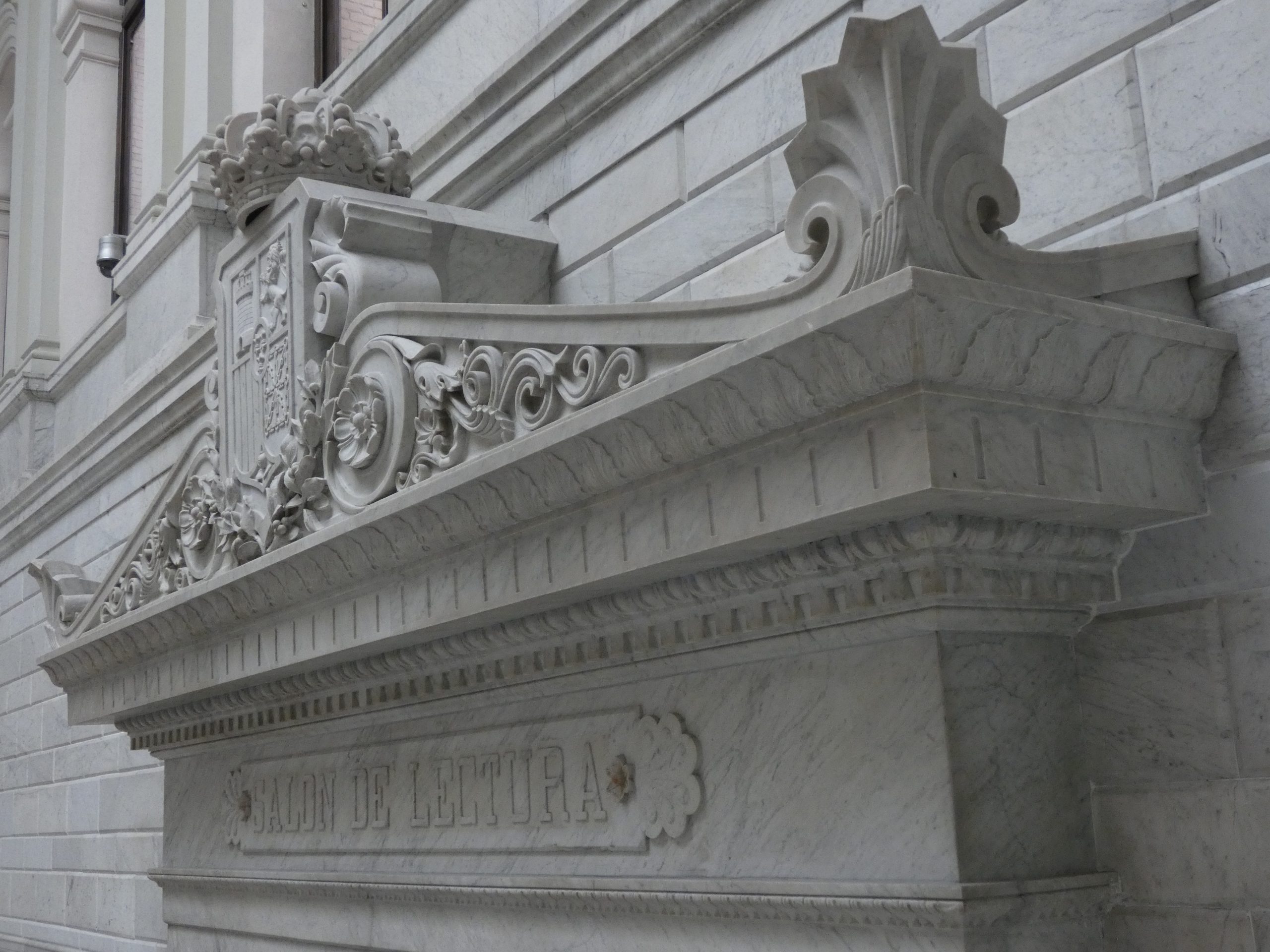
The National Library of Spain disseminates this bibliographic heritage through its catalog and the preparation of the Spanish Bibliography, and provides services to the public ranging from consultation rooms and remote services via its website, to specialized bibliographic information services and interlibrary loans.

The Library Museum and Exhibition Halls, which are open to the public, provide information on the collections, operations and history of the National Library. Its cultural program includes exhibitions, conferences and presentations. This is one of the places in Madrid that deserves a visit.
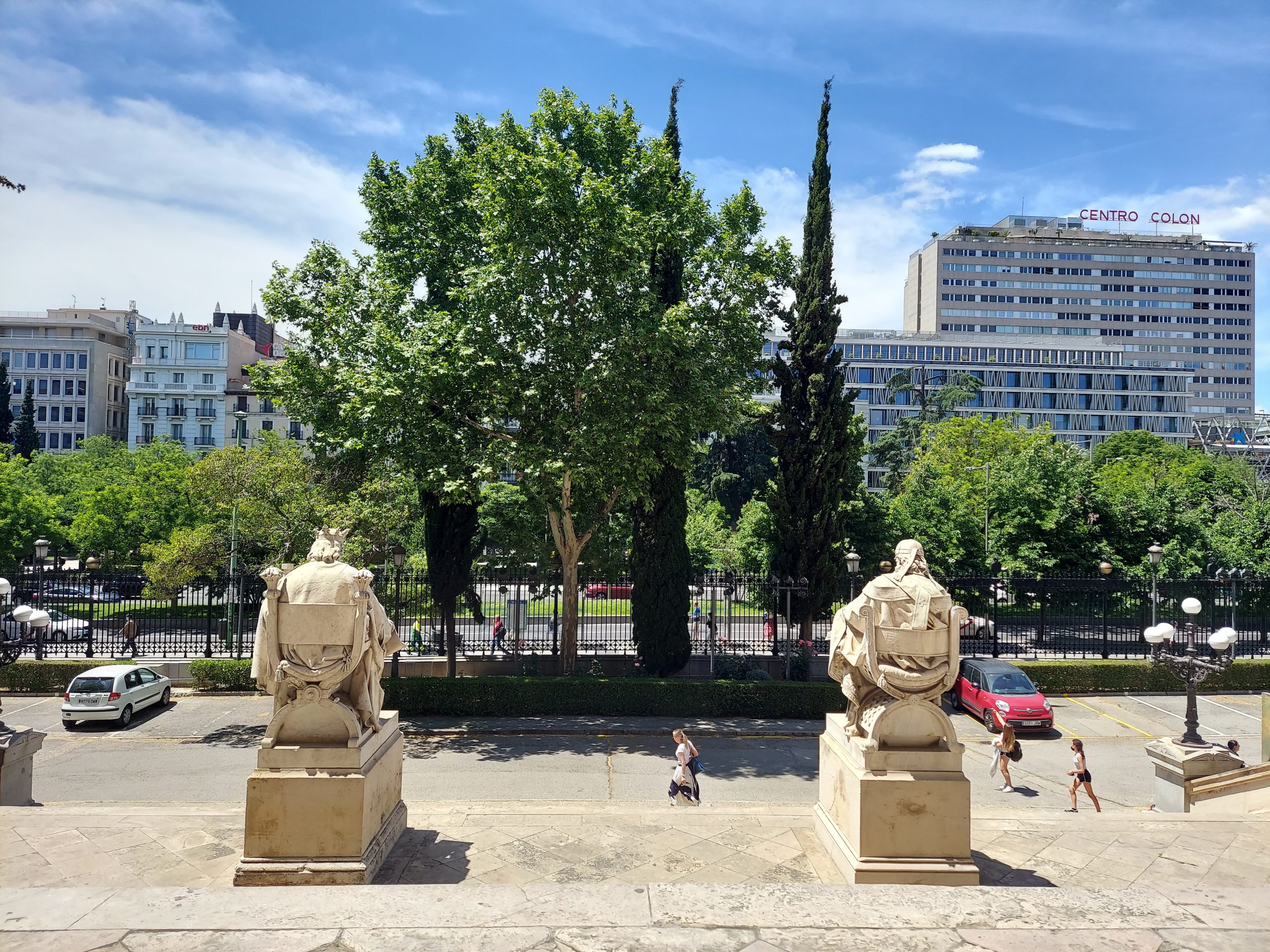
Resources:
https://es.wikipedia.org/wiki/Biblioteca_Nacional_de_Espa%C3%B1a
http://www.españaescultura.es/es/archivo-biblioteca/madrid/biblioteca_nacional_de_espana.html
https://www.esmadrid.com/informacion-turistica/biblioteca-nacional
